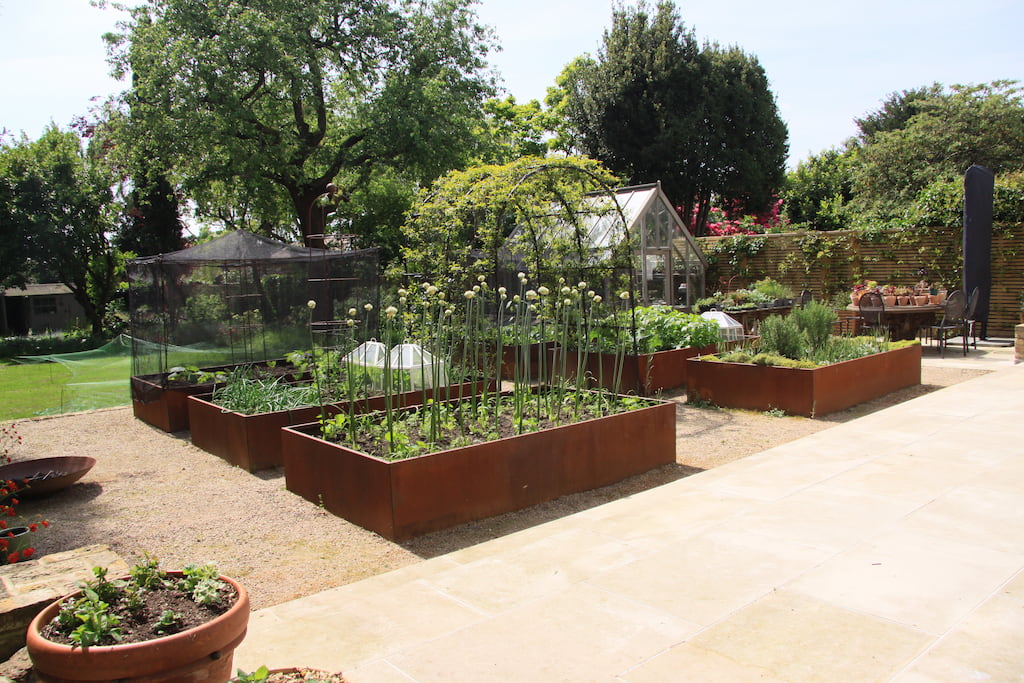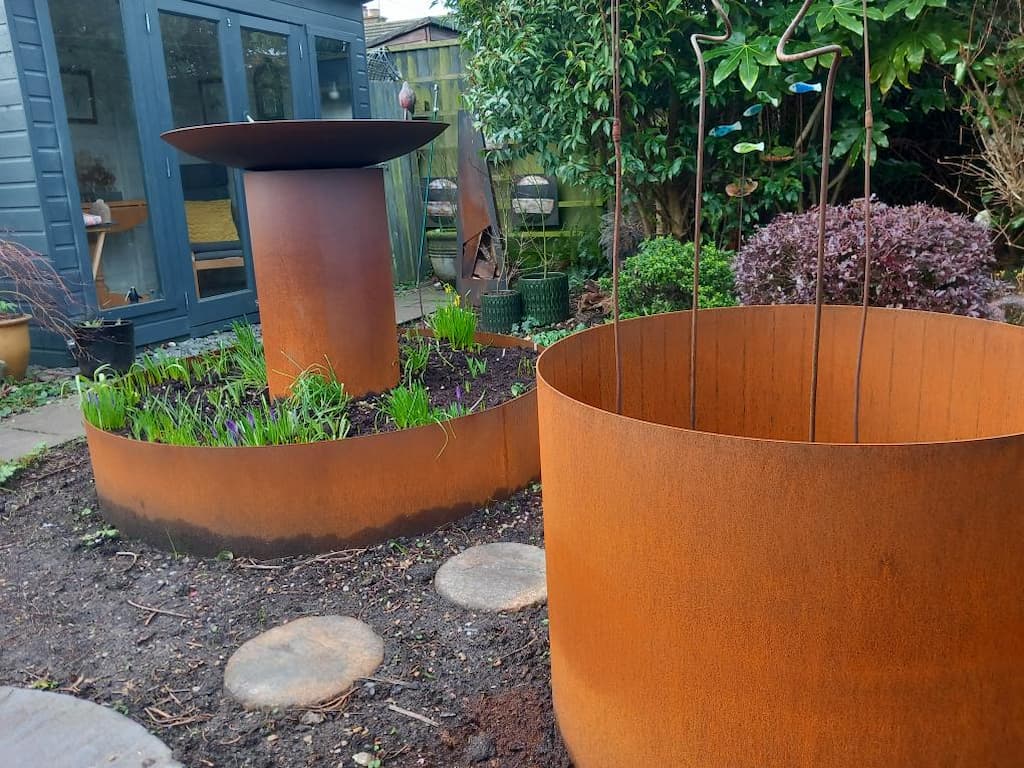The Sustainability of Corten Steel Planters
The Sustainability of Corten Steel Planters
The awareness of the environmental impact of the different materials and techniques used in garden and landscape design is growing. When it comes to looking for materials to make planters, raised beds, or retaining walls, corten steel is perhaps one of the more environmentally friendly options. In this article, we’ll take a look at why this is and how it compares to some other commonly used materials.

Contents
What is Corten Steel?
Corten steel, also known as weathering steel, is a group of steel alloys designed to eliminate the need for painting by forming a stable rust-like appearance after exposure to weather. This patina not only provides an aesthetic appeal but also serves as a protective layer that prevents further corrosion, enhancing the material’s durability.
The name COR-TEN was trademarked by US Steel almost a century ago, with its name coming from its two primary properties: CORrosion-resistance and TENsile strength. Originally used in the railroad industry, Corten steel has since become increasingly popular in architecture and landscape design.
To learn more about Corten check out our what is corten steel? blog post.
Environmental Benefits of Corten Steel
Longevity and Durability
Corten steel is both long-lasting and durable. It should last multiple decades in most environments, although exactly how long will depend on the conditions it is used in. Corten steel thrives in places where the weather alternates between wet and dry periods (like the UK) as this helps to establish the protective layer. This protective layer will also repair itself if it gets scratched.
Low Maintenance
As long as it is allowed to weather in good conditions, corten steel will need none of the protective chemical treatments that other alternative steels or materials might require to prolong their lives. This also means that there is very little regular maintenance required on corten steel products other than perhaps an occasional clean to get rid of any accumulated grime that looks unsightly. This saves time, money, and resources.
Recyclability
Corten steel products help to contribute to the circular economy. They can be recycled into new steel products if they are no longer wanted or repurposed and reused. This means that there is very little waste. Indeed, a planter could be created from corten steel that has itself been recycled from something else and then be recycled into another corten steel product when it is no longer wanted.
Comparison with Other Materials
Corten steel compares favourably with many other materials that can be used to make planters or other garden landscaping products. Plastic use is increasingly being associated with high environmental impacts. This is because it takes quite a lot of energy to produce, the products themselves don’t always last that long, and some plastics are difficult to recycle.
Wood, meanwhile, needs to be sustainably sourced to minimise damage to local environments, while even high-quality timber is unlikely to last as long as corten steel so will need to be replaced more frequently. It may also need to be treated with chemical preservatives or paints to prolong its lifespan.
Traditional mild steel requires protective coatings if it is to last anything like as long as corten steel. These require work to apply, energy to produce, and may sometimes include the use of harsh chemicals with possible negative effects on the environment.
Impact on Soil and Plant Health
There is no need to use protective treatments on corten steel because it forms its own protective patina as long as it is exposed to the right sort of conditions, there is no risk of said treatments leaching into the soil and harming plant or human health. Also, plastics can break down into microplastics as they age. These have been found in the food chain with uncertain consequences for human and animal health. Some wood preservatives are also unsuitable for raised beds where food might be grown.

Design and Lifecycle
Corten steel is amazingly versatile as a material when used in garden design. Its rust-coloured finish can look great in urban and contemporary gardens and adds a crispness to the space. However, they also make good rustic planters in more traditional or informal gardens. This means it also has a remarkably timeless aesthetic and that corten steel products should remain useful as garden design styles and fashions come and go.
This is just as well because the exceptional longevity of corten steel means products should last for decades. Presented over an entire lifecycle, corten steel products must be among the most environmentally friendly available. They have a high upfront energy need, but as they hardly ever need replacing or remoulding, they make up for that as the years go by. Furthermore, when properly looked after, there should be very little danger of harmful levels of chemicals building up in the soil and no need to apply any potentially harmful chemical preservatives.
If you’ve been inspired by this article to consider corten steel in your garden or outdoor space then why not take a look at our extensive range of high-quality rustic steel planters. They include planters in a huge array of shapes of sizes including round corten steel planters and large corten steel troughs.
